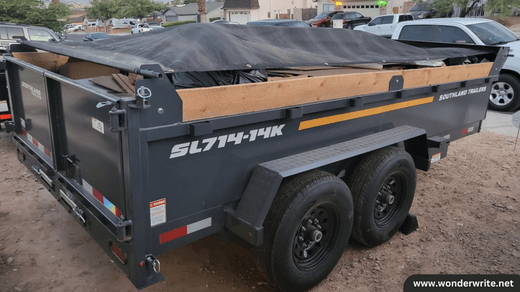Welcome to the electrifying world of modern businesses! In today’s fast-paced and ever-evolving commercial landscape, electricity is the lifeblood that keeps operations running smoothly. From powering machinery to lighting up offices, electrical systems play a crucial role in ensuring business continuity. And at the heart of these systems are commercial circuit breakers – unsung heroes safeguarding your workplace from potential electrical hazards.
But what exactly are commercial circuit breakers? How do they work their magic behind the scenes? And why are they so vital for businesses relying on smooth power distribution? It’s time to unravel the mystery and dive into the fascinating realm of commercial circuit breakers. So grab your hard hat and let’s embark on this enlightening journey together!
How do Commercial Circuit Breakers work?
Commercial circuit breakers are the guardians of electrical systems, constantly monitoring and protecting against overloads and short circuits. They act as a crucial safety net, preventing potential damage to equipment and ensuring the smooth flow of electricity.
At their core, commercial circuit breakers work on a simple yet ingenious principle: they interrupt or “break” the flow of electric current when it exceeds safe levels. This is accomplished through an electromechanical mechanism that consists of two key components – a bimetallic strip and an electromagnetic coil.
When excessive current flows through a circuit, the bimetallic strip heats up due to resistance. As it warms, it bends or deforms under pressure until it reaches a critical point where it triggers the trip mechanism. This action rapidly opens the contacts in the breaker’s internal switch, cutting off power to prevent further damage.
In addition to thermal protection, commercial circuit breakers also employ magnetic elements for faster response times in case of short circuits. When high currents surge through an overloaded circuit, these magnetic elements create a powerful magnetic field that attracts an armature plate. The force exerted by this attraction causes instantaneous tripping of the breaker’s contacts.
It’s important to note that different types of commercial circuit breakers have varying trip characteristics based on their intended applications. Some may offer adjustable settings for fine-tuning protection levels while others are specifically designed for specialized environments such as hazardous locations or motor control centers.
By swiftly detecting abnormal electrical conditions and promptly interrupting power flow, commercial circuit breakers not only safeguard expensive machinery but also protect human lives from potential hazards such as electrocution or fire outbreaks. These unsung heroes play an indispensable role in maintaining operational efficiency and minimizing downtime in modern businesses’ electrical systems.
Types of Commercial Circuit Breakers and Their Functions
Commercial circuit breakers come in various types, each designed for specific functions and applications. Let’s explore some of the most common ones:
- Thermal Circuit Breakers: These circuit breakers use a bimetallic strip that bends when exposed to excessive heat, causing the contacts to open and interrupting the electrical flow. They are commonly used in residential and small commercial applications.
- Magnetic Circuit Breakers: Also known as magnetic-hydraulic or magnetic-only circuit breakers, they utilize a solenoid coil that creates a magnetic field to trip the breaker when an overload occurs. These are often found in industrial settings where high-power equipment is used.
- Ground Fault Circuit Interrupter (GFCI): GFCIs detect imbalances in current between hot and neutral wires, shutting off power if there is even a slight deviation. They are crucial for protecting against electrical shocks and are typically installed in areas with water or moisture present, such as kitchens and bathrooms.
- Arc Fault Circuit Interrupter (AFCI): AFCIs detect dangerous arcing faults caused by damaged wiring or faulty connections within an electrical system. By quickly disconnecting power when these faults occur, AFCIs help prevent fires from starting due to electrical hazards.
- Residual Current Circuit Breaker with Overcurrent Protection (RCCBO): RCCBs offer both overcurrent protection like traditional circuit breakers along with additional protection against earth leakage currents.
Their main function is to protect people from electric shock by instantly detecting any imbalance between incoming phase(s)and outgoing return path.
They can be particularly useful in environments where sensitive electronic equipment is used, such as data centers or medical facilities.
By understanding the different types of commercial circuit breakers available, businesses can choose the right one for their specific needs ensuring safety, reliability, and efficient operation of their electrical systems.
Conclusion
In today’s modern businesses, commercial circuit breakers play a crucial role in ensuring the safety and efficiency of electrical systems. By automatically detecting and interrupting electrical faults, these devices protect valuable equipment and prevent potential hazards.
Understanding how commercial circuit breakers work is essential for any business owner or operator. These devices are designed to monitor the flow of electricity within a system and trip when an overload or short-circuit occurs. This helps prevent damage to electrical equipment and reduce the risk of fire or other accidents.
There are several types of commercial circuit breakers available, each with its own specific function. Industrial motor controls allow for precise control over motors used in various industrial processes. Electrical power transformers help step up or step down voltage levels, allowing electricity to be transmitted efficiently across long distances.
Commercial motor controls enable smooth operation and protection for electric motors used in commercial settings such as HVAC systems or manufacturing equipment. And finally, electrical equipment suppliers provide a wide range of products needed for safe and reliable power distribution.
To ensure that your business runs smoothly and safely, it is important to invest in high-quality commercial circuit breakers from reputable suppliers like Industrial Motor Controls Inc., Electrical Power Transformers Ltd., or trusted electrical equipment suppliers.
By understanding the importance of these devices and selecting the right ones for your specific needs, you can safeguard your assets, minimize downtime due to electrical faults, and create a safer work environment for everyone involved.
Remember that regular maintenance checks by qualified professionals are also crucial to ensuring that your commercial circuit breakers continue to function optimally. Regular inspections can help identify any potential issues before they escalate into major problems.





